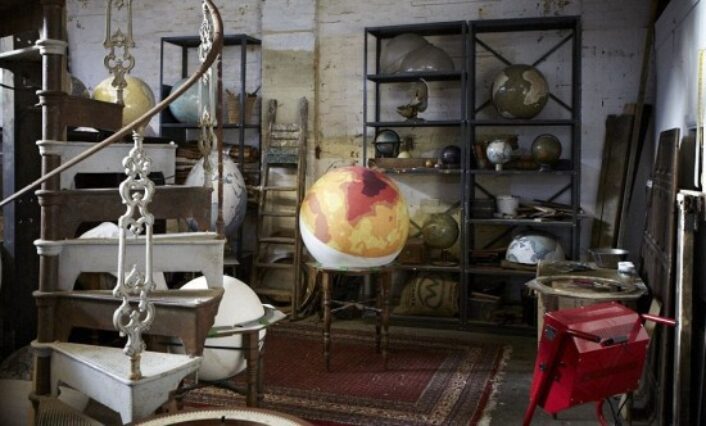Culture
Handcrafted globe perfection
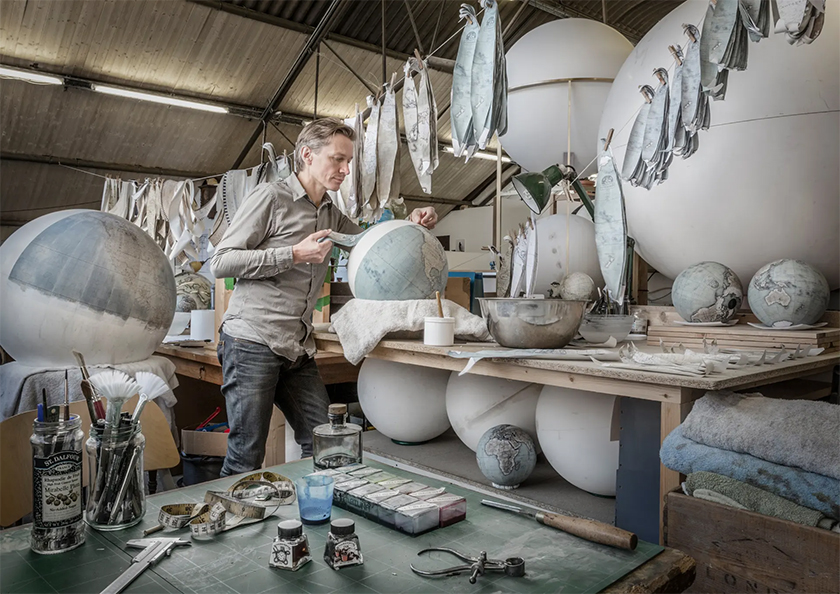
Peter Bellerby taught himself the delicate art of globe-making.
Image courtesy of: The Guardian
The lost art of hand-making traditional crafts is indeed alive and well at Bellerby & Co., the London-based company where globes are hand-crafted pieces of art. This light-filled studio was established in 2008 when Peter Bellerby found himself searching, fruitlessly, for a globe as a birthday present for his father’s eightieth birthday. All he could find were factory-made versions of globes… the exact opposite of what he was looking for.
Western globe making traditions were popular during the Renaissance period and grew as a trade in the 18th-century due to the rise of globes as important technological and educational tools. However like many other things, the tradition of hand-making gave way as the 20th-century approached.
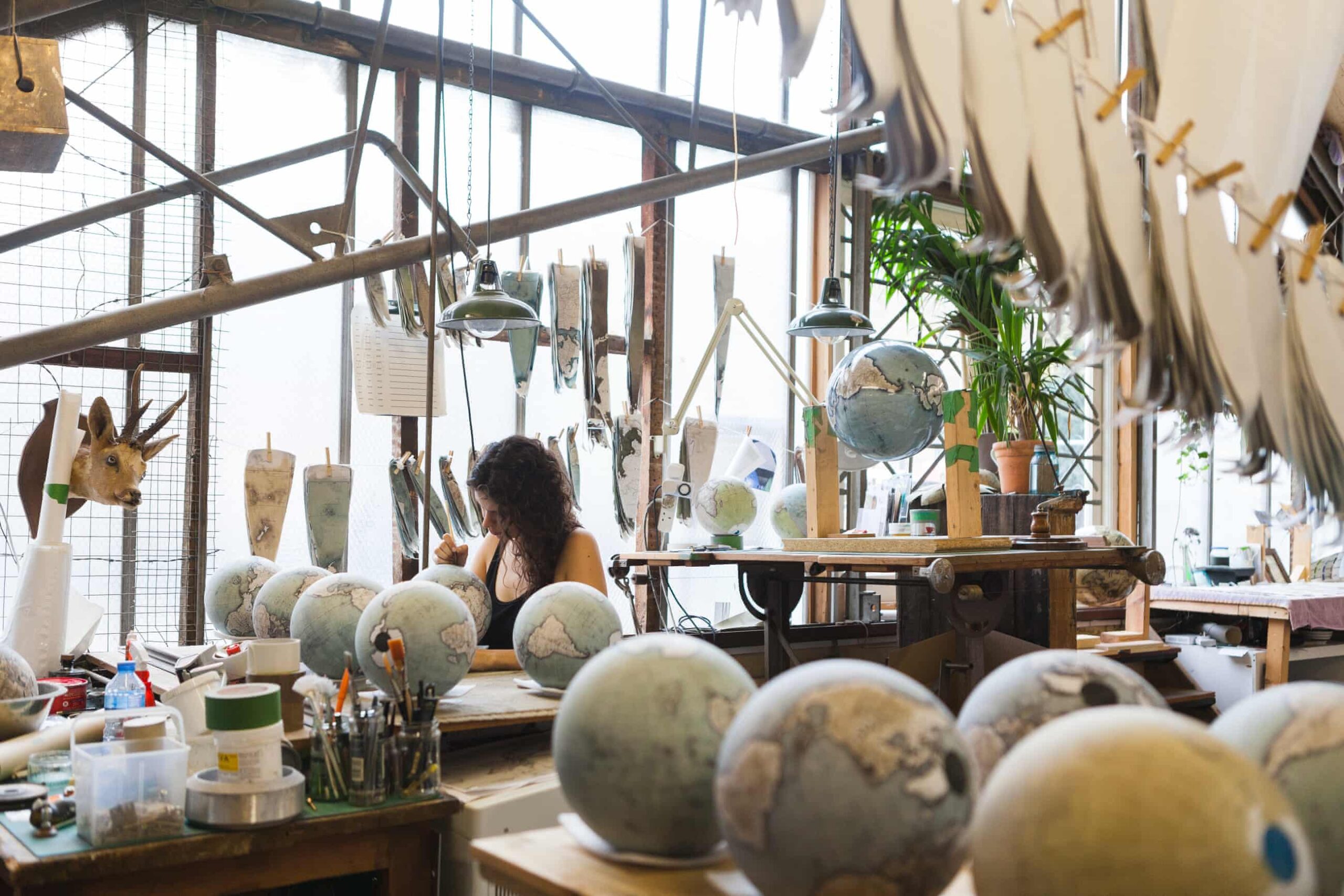
There are about twenty people who work at Bellerby & Co.
Image courtesy of: The Guardian
It took Bellerby two years to perfect making a globe… there was no one available to teach him what paper to use and what glue worked best. There were a lot of mistakes along the way… and as a result, his father’s birthday present was quite late. Bellerby’s initial goal was to make two globes, one to keep and one to give his father as a gift. This endeavor was never meant to become a business!
The first year in business, Bellerby & Co. received only three orders. The second year they received twelve requests. In 2017, there were 650 orders for custom globes. Most requests are for private clients and, depending on their specifications, the globes can take anywhere from three weeks to six months to complete.
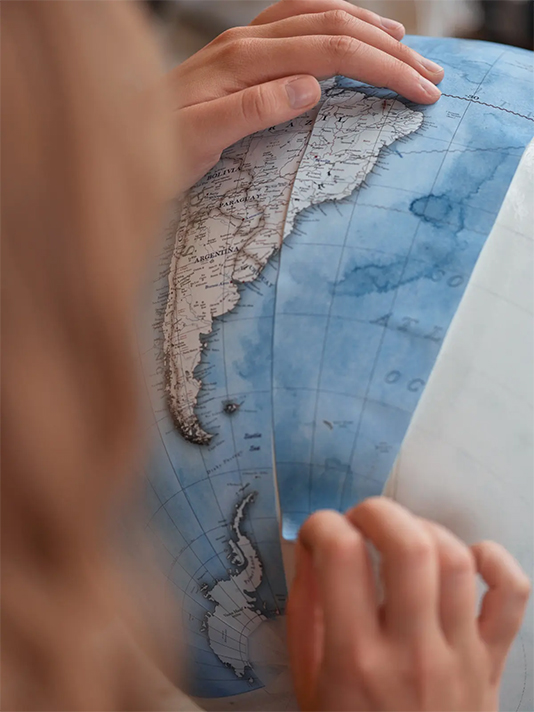
Cartographers are sometimes called upon to create celestial bodies.
Image courtesy of: The Guardian
Requests are often complicated… there was a project for the Louvre asking to make a celestial globe featuring 88 constellations and using original copper plates that hadn’t been used for more than one hundred years.
The globemakers work closely with their team of artists and artisans, each person considerate of each other’s specific work. Woodworkers craft the globe base from wood or metal. Cartographers plan the actual maps of the land and sea. Illustrators and painters bring in the color and dimensions and integrate personal touches for the clients. And Bellerby’s best find… a skilled engraver who hand-engraves the meridian (the metal band that encircles half or the entire globe) which is affixed to the globe on both poles and the base in the final stages.
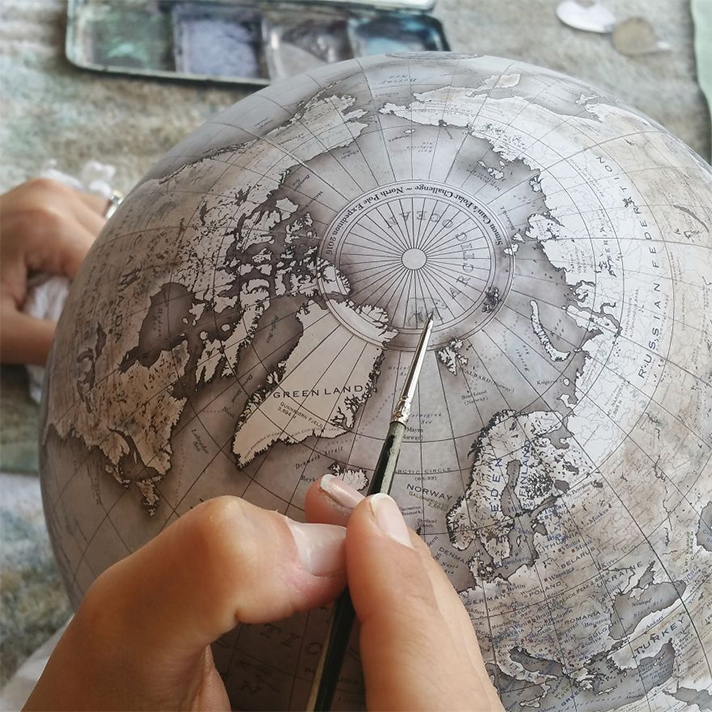
A trained globe-maker hand-paints the details.
Image courtesy of Design Collector
The only things you really need in globe-making are hands, water, and glue. As much as Bellerby has wanted to maintain an Old-World aesthetic, innovation is a key part to keeping the art alive and current. Rather than maintaining 15th-century techniques of etching the reverse image of a map into copper plates and then printing maps for those plates, Adobe Illustrator is used. The software allows cartographers to reenact aspects of cartography; for example, they might mimic the irregularities of metal typesetting by adjusting the placement of individual letters for each word on the globe labels.
With a team of twenty on staff, it is vital that the apprentices hired are of the highest caliber. Apprentices go through a six-month training process to learn how to make the smallest-sized globe. As each new globe takes an additional three months of training (due to the process of weighting and stretching the paper differently); the only way to perfect the trade is through repetition.
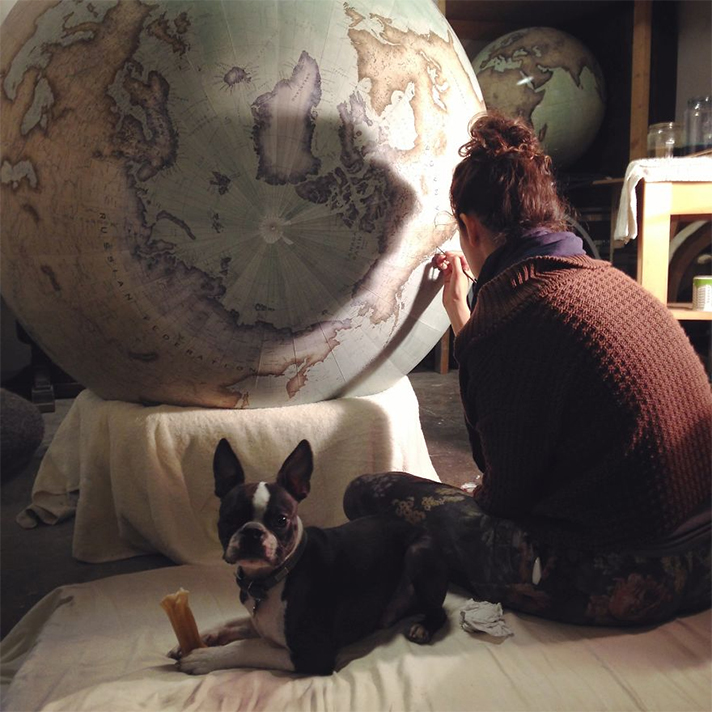
When Bellerby was unable to source perfectly spherical mounds, he reached out to Formula 1 fabricators for a solution.
Image courtesy of: Design Collector
No 2 days at the studio are alike… projects differ and each globe is at a different stage of completion.
Nevertheless, it is the thoughtful effort that is put into each and every design that makes Bellerby & Co. stand out. There is a globe that was made for a member of the House of Lords which featured a specific crest… that was 100% unique. Another customer was flying to Antarctica and insisted that the airstrip on which he was going to land be included on the globe. It is quite common that globes are edited to include all the places the customer has been to. This means that tiny towns and villages that would never have been included on a map suddenly become focal pieces on a Bellerby & Co. globe.
The best part… there is no denying that these globes will become family heirlooms, and passed down for generations to come!
